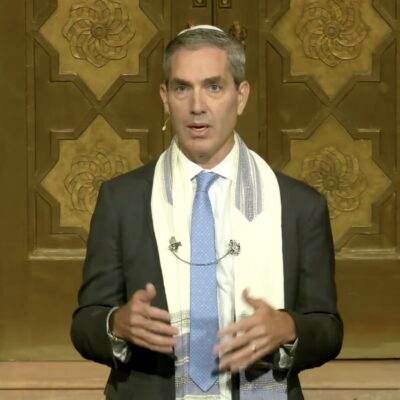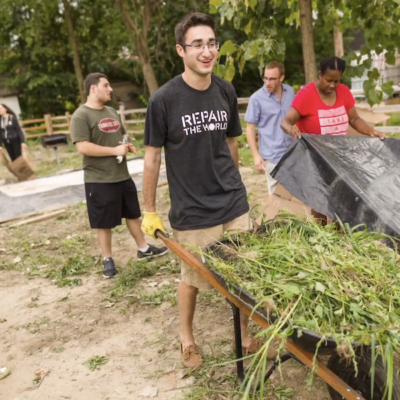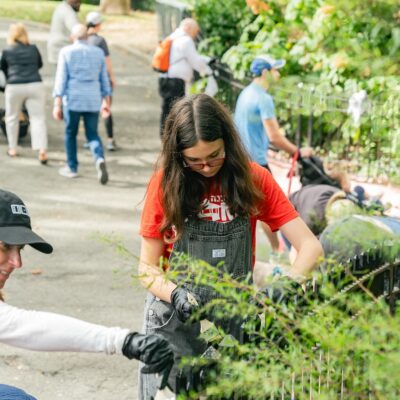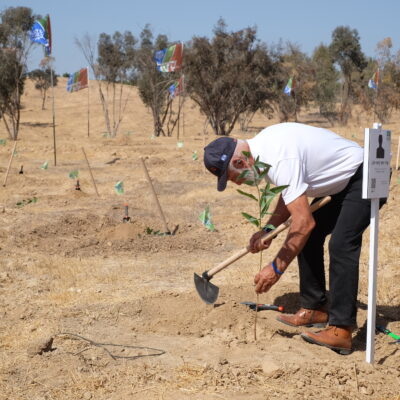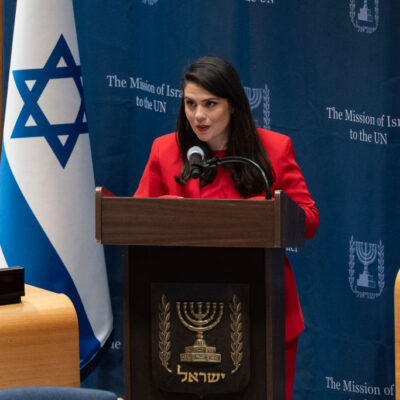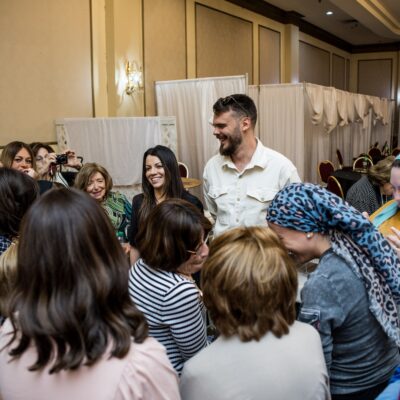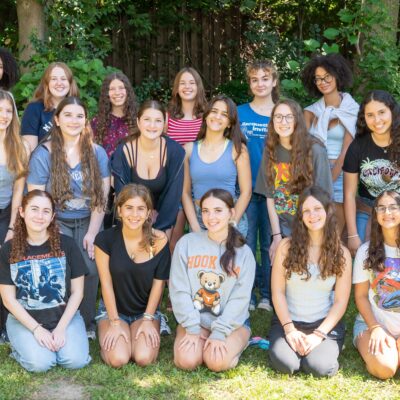Opinion
SHEHECHIYANU
Marking this moment: 5 ways to cross a threshold
On the morning of Oct. 9, I woke to the news that a deal had been reached — that the hostages were coming home. Like so many, I burst into tears. After months of praying, shouting and waiting, we had reached the moment we had begged for. It is not a simple moment, as not all of the hostages are alive, adding to the painful losses of civilians and soldiers over the last two years. But it is a turning point that comes after the Jewish people have stood at the gates of heaven — crying with hostage families, attending funerals, marching for solidarity and holding onto fragments of hope. We have argued and defended, reached across divides and tried to bring light where we could.
In that search for light, our team at M² gathered in the days following Oct. 7, 2023 to do what we know best: create resources to help educators bring meaning and language to what was happening around us. The series, called “From This Moment, For This Moment,” reached thousands of Jewish educators, helping them and their students to find grounding, reflection and hope amid uncertainty. Outwardly, we said the project was for the field. In truth, it was also for ourselves. Every day for several weeks, we wrote. Each resource gave us something to hold onto — an idea, a text, a fragment of hope. They gave form to emotions that had nowhere else to go.

Chris McGrath/Getty Images
A man sprays sparkling wine over the crowd after 20 hostages were released from captivity in Gaza, at Hostages Square in Tel Aviv, on Oct. 13, 2025.
Now, as the world feels shifts once again, new questions arise: How do we mark this time? How do we move from one chapter of history to the next — carrying both joy and sorrow, pride and exhaustion — and begin to make meaning of arrival, just as we once did of loss?
So our team gathered again. This time in awe, in trembling, in disbelief that perhaps we had reached the other side. We began by saying Shehechiyanu — the blessing we recite upon reaching a new moment: Blessed are You, who has kept us alive, sustained us and brought us to this day. It felt right to begin there — to breathe in what was unfolding and to treat it as sacred.
From there, we began to create again.
Judaism has a deep language for crossing thresholds. It doesn’t only teach us how to feel; it teaches us what to do. It gives us concrete actions — gestures and rituals that help us hold what words cannot. We light candles and break glasses. We plant trees and recite blessings. We sing, we cry, we sort, we build. Through rhythm and repetition, through motion and memory, Judaism helps us name what is ending, what is beginning and what we still do not understand.
This is what we drew on as we created a new collection — five ways to mark this moment. Each practice offers something we can do — a small ritual or gesture that brings meaning into our hands. They can take place anywhere: in classrooms and boardrooms, with students or colleagues, around the family table or even alone. Each draws from a familiar Jewish act and turns it toward this moment, helping us give shape to what we’ve lived through and what we hope will come next.
Five ways to mark this moment
Each of the following draws from a full resource — complete with texts, reflections and activities — that can be found in the links. But even without reading the full pieces, each offers a shared way to mark this time together — in classrooms, board meetings, sanctuaries or around the family table.
1. Break a glass: In Jewish weddings, a glass is broken at the height of joy — a reminder that even as we celebrate, we remember what remains unhealed. Gather together and mark this threshold: Break a glass, not to shatter what is whole, but to give sound to all that we hold. Let the moment of silence that follows be its own kind of prayer.
2. Tell the story: This time is framed by two Simchat Torahs — one that began the story of loss, and one that now opens the story of return. Like the Torah itself, our story circles back on itself, always beginning again. Sit together and recall the moments that have shaped these two years — and imagine what might come next.
3. Bless this moment: On Shemini Atzeret, we pray that the rain will fall “for blessing and not for curse, for life and not for death.” Gather as a group and share what you wish to carry into the year ahead, and what you are ready to release. Speak, write or paint together. Offer your words as a shared blessing for what will grow from this moment.
4. Visualize the contradictions: Kohelet teaches that there is time for everything. Yehuda Amichai argued that it’s all at once. Between these two voices lies our reality. Create a shared mobile, where each piece carries contradictory emotions that coexist within us. Hung together, they turn and balance in the air, a living image of what it means to feel deeply and stay whole.
5. Tashlich – Let it go: Over these two years we have collected ribbons, bracelets, dog tags and masking tape —objects that carried our longing and our faith. Bring them together and ask: what do we keep, what do we let go of and what do we wish to learn from this time? Find a meaningful way to mark the closing of one chapter and prepare our hearts for what will follow.
Educators and leaders help communities make meaning. We turn experience into language, memory into teaching and moments like this into spaces for reflection and care. As we move through these days, our work is to help others hold what they feel and to remind them that they are not alone.
This is, and has always been, the calling of Jewish education: to take the raw material of life and turn it into learning, to help people see holiness in their own experience and to offer language, ritual and rhythm for what the heart already knows. May this moment, and the work we do within it, be worthy of the people and the stories we carry forward.
Shuki Taylor is the CEO of M²: The Institute for Experiential Jewish Education.

 Add EJP on Google
Add EJP on Google